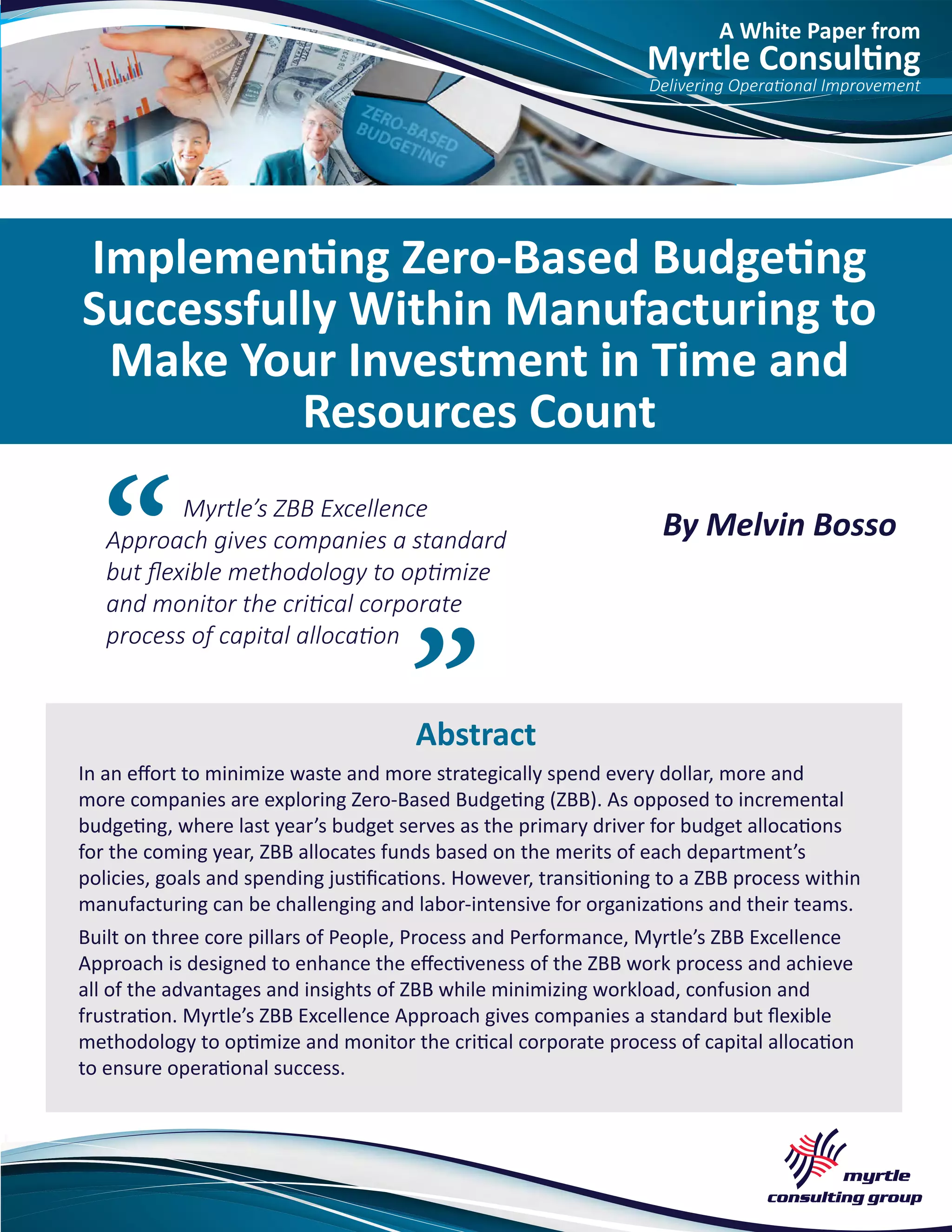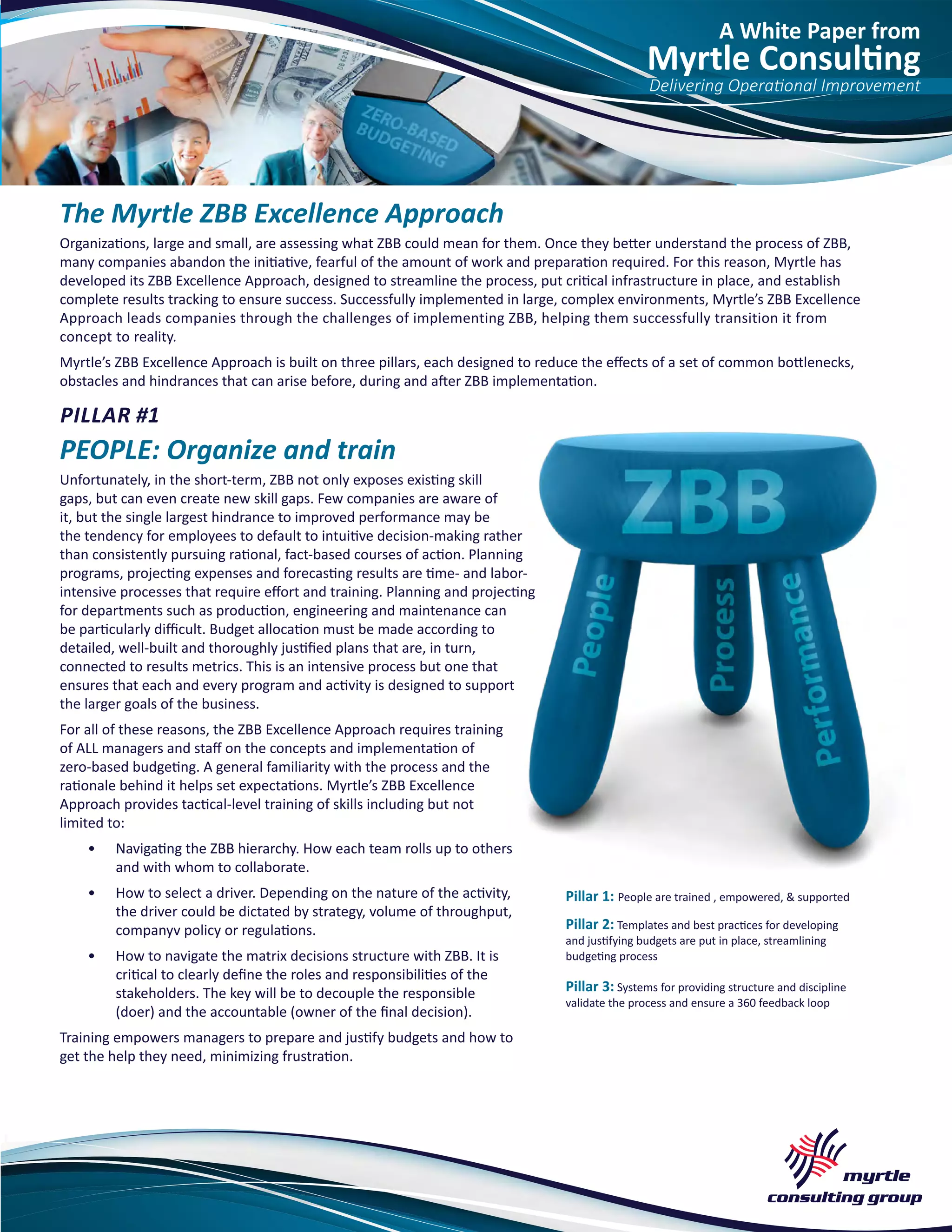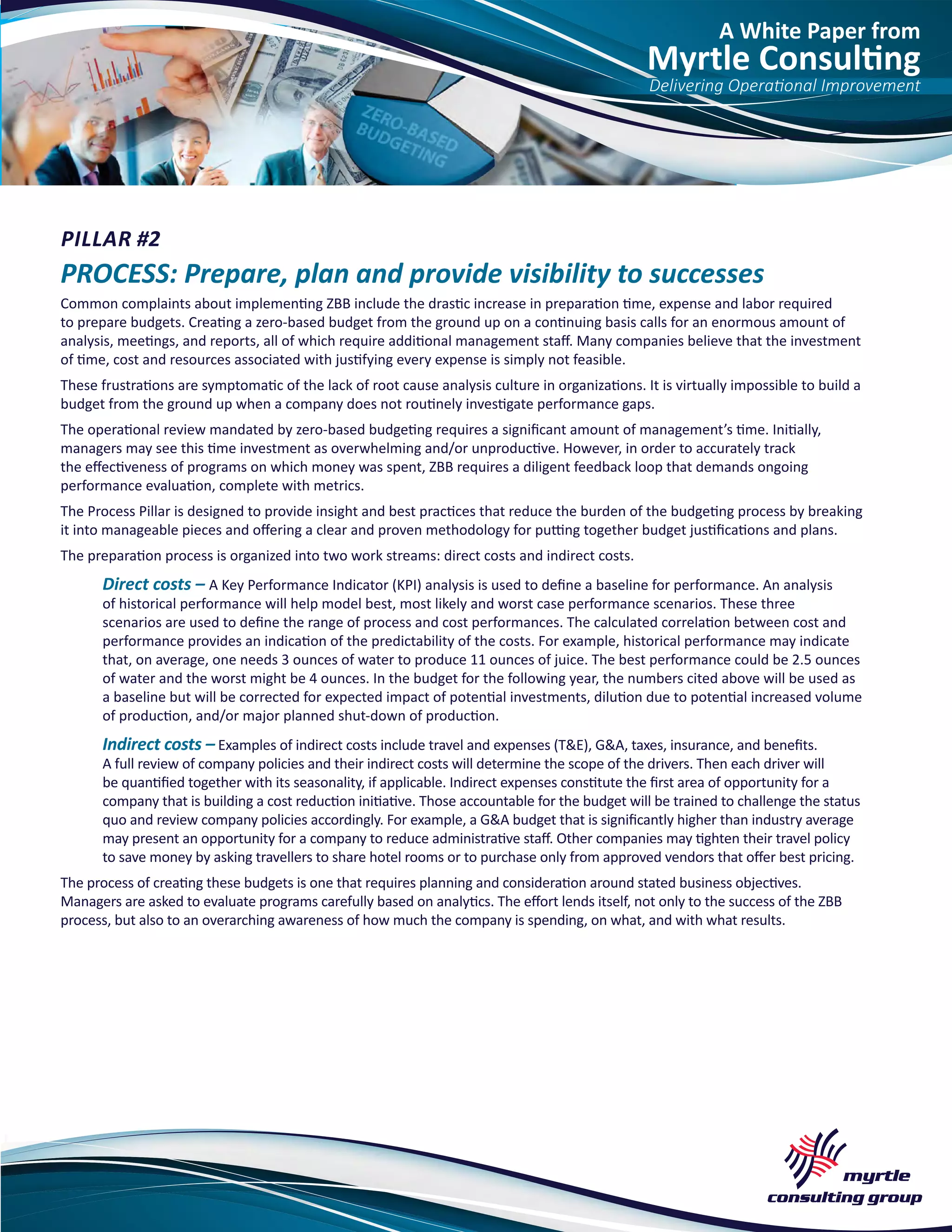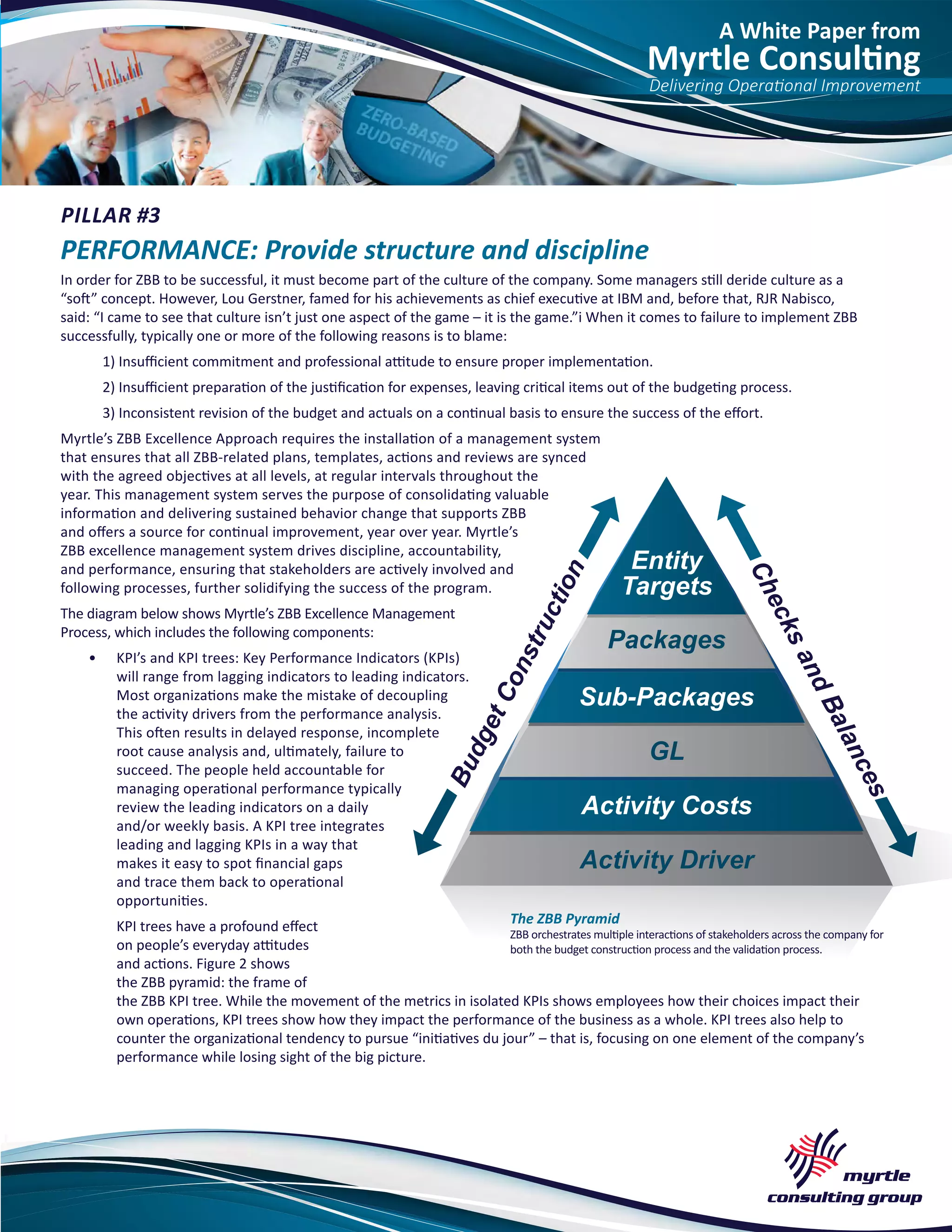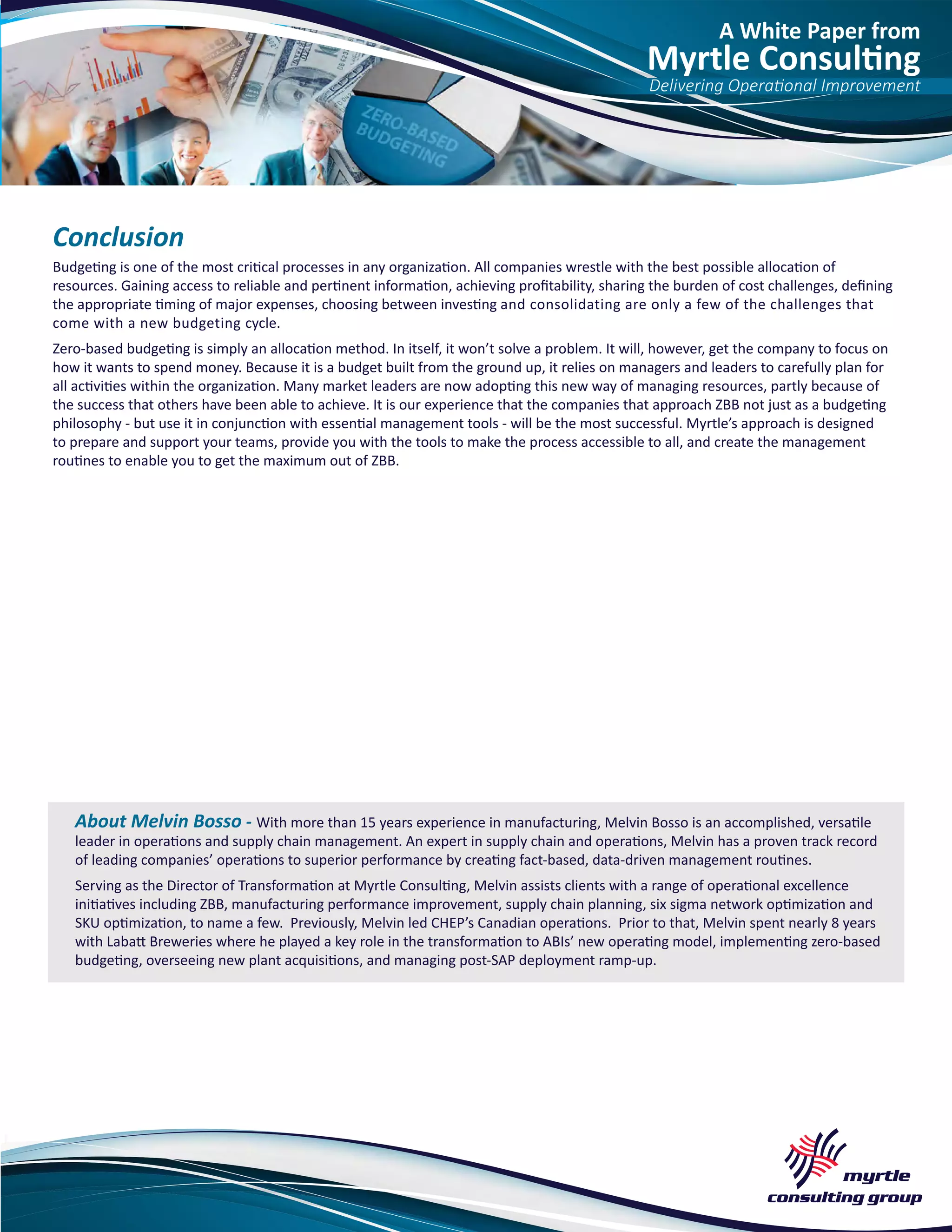This white paper from Myrtle Consulting discusses the implementation and benefits of zero-based budgeting (ZBB) in organizations, particularly in manufacturing. It introduces Myrtle's ZBB Excellence Approach, which is based on three pillars: people, process, and performance, aimed at optimizing capital allocation while minimizing workload. The paper emphasizes the importance of structured training, clear planning, and a management system to ensure the successful transition to ZBB, ultimately enhancing accountability and effectiveness in budgeting processes.
